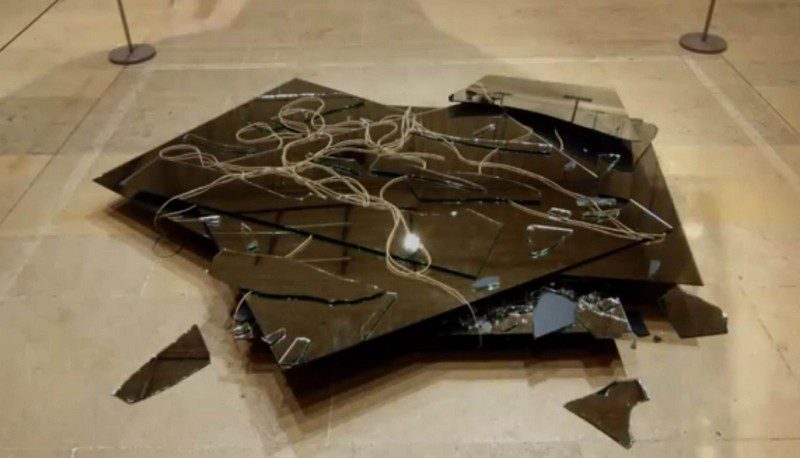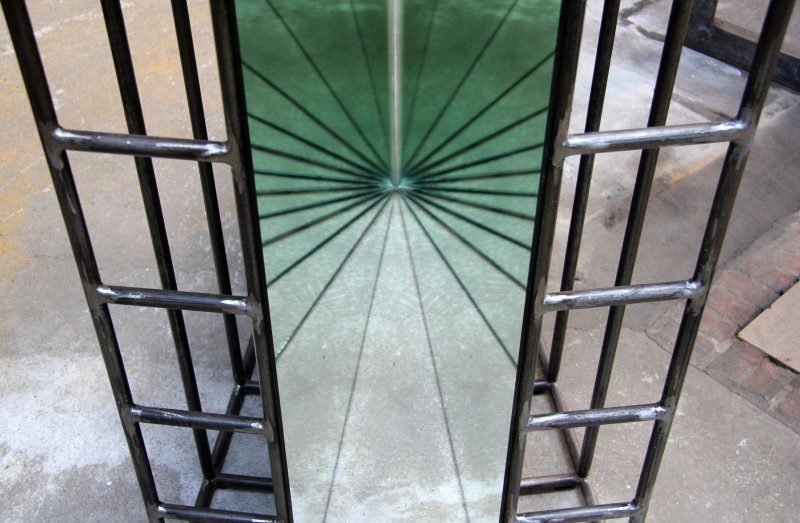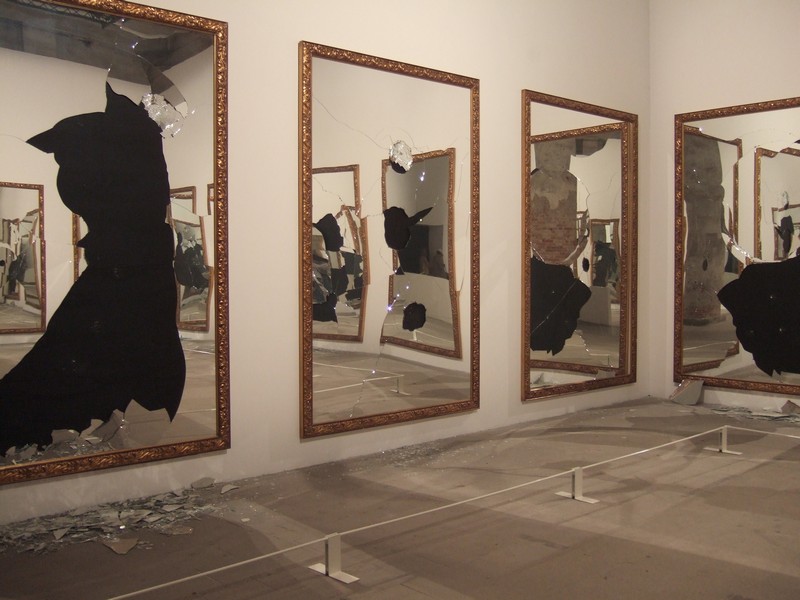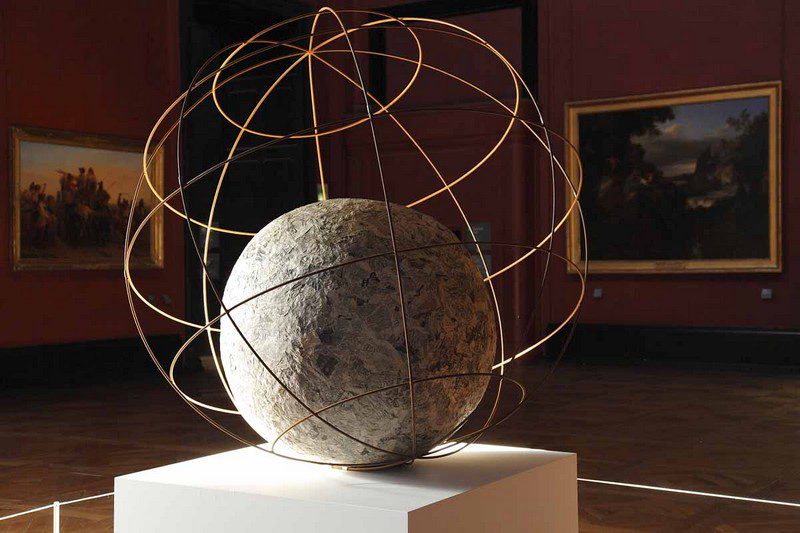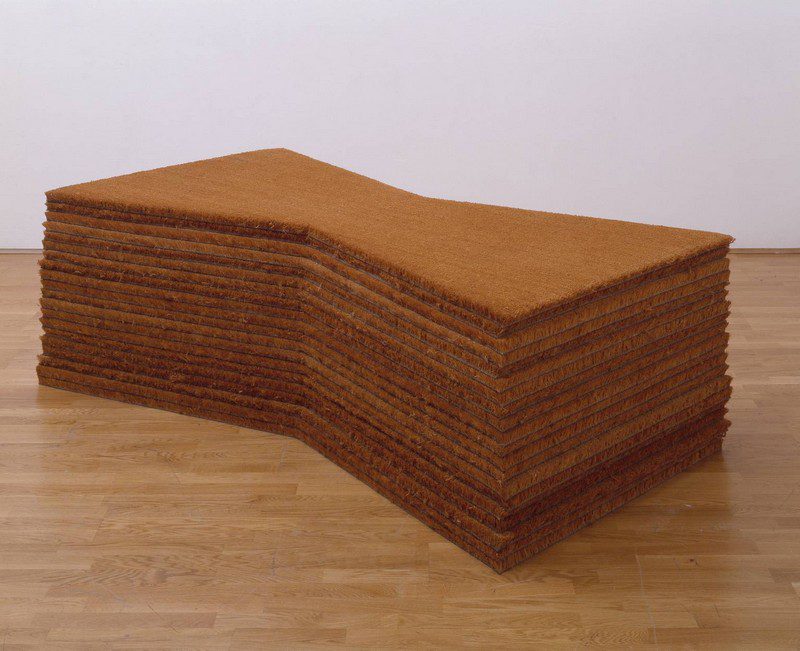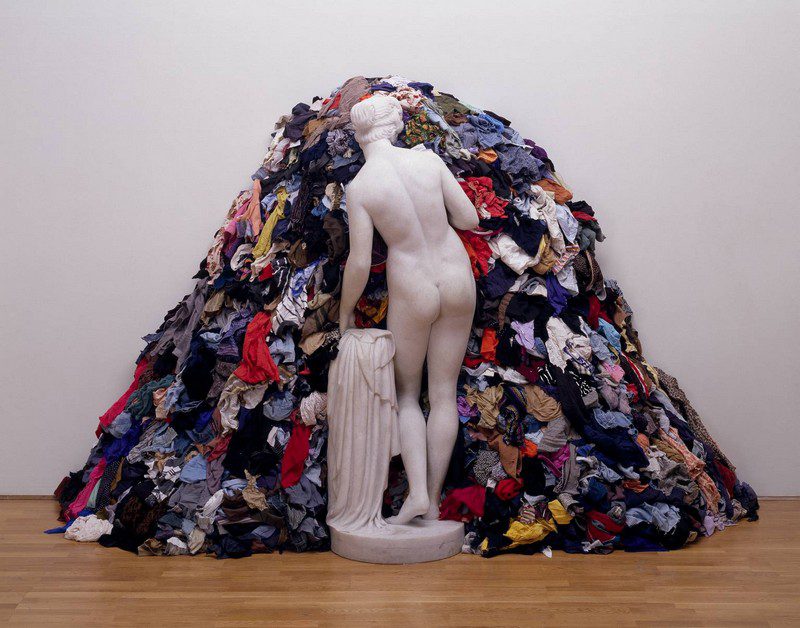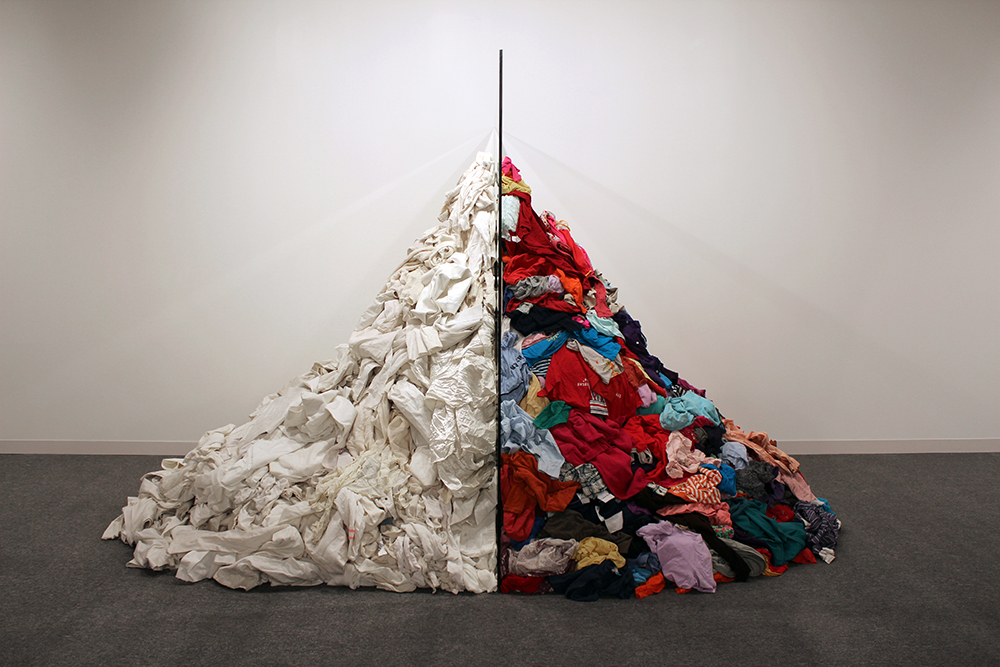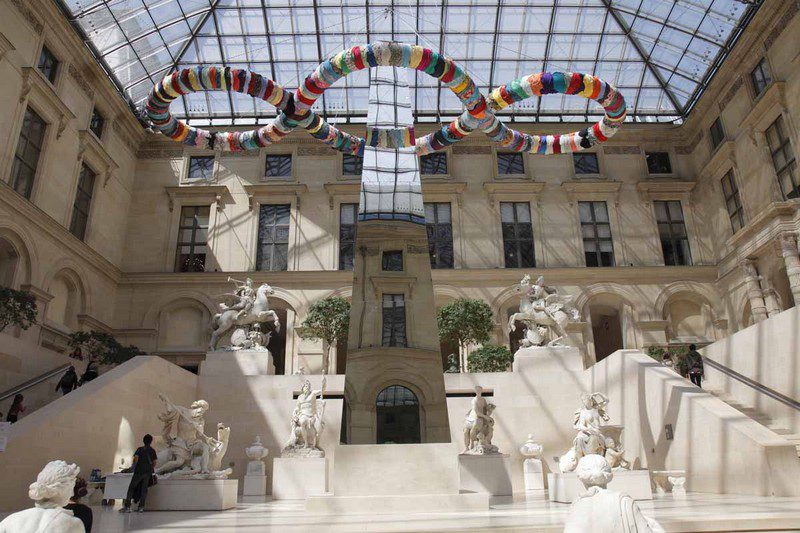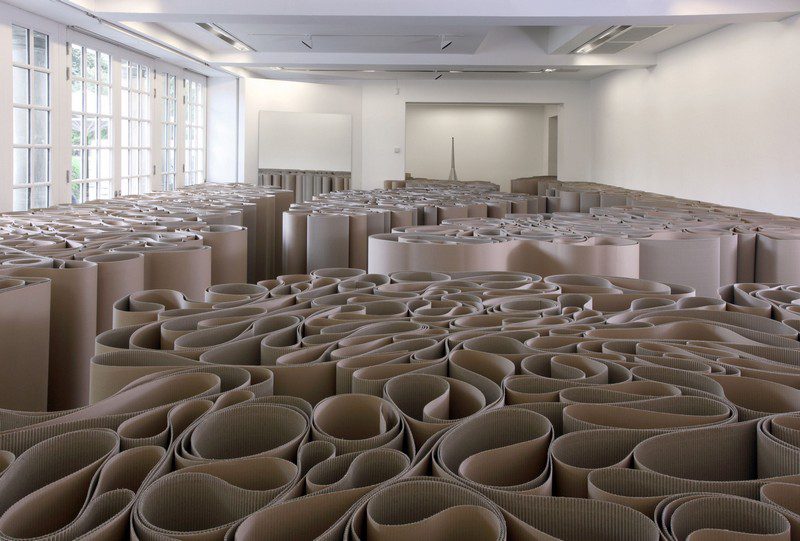TRACES:Michelangelo Pistoletto
Today is the occasion to bear in mind the Italian artist, and art theorist, Michelangelo Pistoletto (25/6/33- ). Born in Biella, Italy, Pistoletto was a leading figure in the development of both Arte Povera and conceptual art. His work mainly deals with the subject matter of reflection and the unification of art and everyday life in terms of a universal work. This column is a tribute to artists, living or dead, who have left their mark in Contemporary Art. Through documents or interviews, starting with: moments and memories, we reveal out from the past-unknown sides of big personalities, who left their indelible traces in time and history…
By Dimitris Lempesis
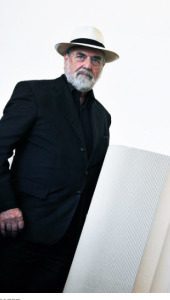 Michelangelo Pistoletto was born in 1933 in Biella in the Piedmont region of Italy. His artistic training began in the studio of his father, a painter and restorer, he worked there the period 1947-58. He subsequently attended Armando Testa’s advertising design school. In the 1950s he made figurative paintings, including many self-portraits. Pistoletto first participated in the Biennale di San Marino in 1959. His first solo exhibition was held the following year at the Galleria Galatea in Turin. In his self-portraits of 1960–61, he covered his canvases with grounds of metallic paint, and subsequently replaced the canvas completely with polished steel. His photo-silkscreened images of people, life-size and on reflective steel, were intended both to integrate the environment and the viewer into his work and to question the nature of reality and representation. Mirrored surfaces recur throughout Pistoletto’s oeuvre. The “Oggetti in meno” of 1965–66 are among his earliest sculptural works. In 1967 he won a grand prize at the Bienale of São Paulo and the Belgian Art Critics’ Award. Also in 1967 Pistoletto began to pursue Performance art, an interest that would expand over his career to encompass film, video, and theater. Pistoletto’s employment of everyday materials, as in the “Muretto di straci” and “Venere degli stracci” (1967) aligned him with Arte Povera. Since 1967, when the term Arte Povera was coined. He withdrew his work from the 1968 Venice Biennale in response to student demonstrations at the event, which were among the countless protests that took place across Italy during that volatile year. Pistoletto has much in common with the German Conceptual artist Joseph Beuys. Both are (in Beuys’s case were) utopian teacher figures, socially conscious and ecologically motivated products of the turbulent Sixties. Like Beuys, with his symbolic obsession with felt and fat, Pistoletto attributes properties to things which the viewer either does or doesn’t take on board. His objects don’t interact with each other. His trumpets and oval symbols don’t express anything, until animated by his philosophy. But there is a difference, where Beuys’s work was inspired by Nordic mysticism, Pistoletto’s is more expansive and Mediterranean in feel, informed by his childhood experiences assisting his father, his interest in mirrors harking back to handling all that burnished gold. Beside this folklore background sit a whole range of idealistic projects designed to draw ordinary people into art. With the Zoo group, which he founded, Pistoletto presented collaborative “actions” from 1968 until 1970. Meant to unify art and daily existence, these performances took place in his studio, in public institutions such as schools and theaters, and on the streets of Turin and other cities. Pistoletto’s book “L’uomo nero, il lato insopportabile” was published in 1970 by Rumma Editore, Salerno. In the late 1970s and early 1980s he made sculptures that drew from art-historical precedents, working in polyurethane and marble. In 1979–80 he presented Performance works in Atlanta and Athens, Georgia, as well as in San Francisco. Among his theater works are “Opera Ah” (1979), presented in the square in Corniglia, Italy, and “Anno uno” (Year One) (1981), which he performed in Rome’s Teatro Quirino. In his hometown of Biella, Pistoletto created the Cittadellarte foundation as a concrete action of his “Progetto Arte Manifesto” where Michelangelo Pistoletto proposed a new role for the artist: Placing art in direct interaction with all the areas of human activity which form society.
Michelangelo Pistoletto was born in 1933 in Biella in the Piedmont region of Italy. His artistic training began in the studio of his father, a painter and restorer, he worked there the period 1947-58. He subsequently attended Armando Testa’s advertising design school. In the 1950s he made figurative paintings, including many self-portraits. Pistoletto first participated in the Biennale di San Marino in 1959. His first solo exhibition was held the following year at the Galleria Galatea in Turin. In his self-portraits of 1960–61, he covered his canvases with grounds of metallic paint, and subsequently replaced the canvas completely with polished steel. His photo-silkscreened images of people, life-size and on reflective steel, were intended both to integrate the environment and the viewer into his work and to question the nature of reality and representation. Mirrored surfaces recur throughout Pistoletto’s oeuvre. The “Oggetti in meno” of 1965–66 are among his earliest sculptural works. In 1967 he won a grand prize at the Bienale of São Paulo and the Belgian Art Critics’ Award. Also in 1967 Pistoletto began to pursue Performance art, an interest that would expand over his career to encompass film, video, and theater. Pistoletto’s employment of everyday materials, as in the “Muretto di straci” and “Venere degli stracci” (1967) aligned him with Arte Povera. Since 1967, when the term Arte Povera was coined. He withdrew his work from the 1968 Venice Biennale in response to student demonstrations at the event, which were among the countless protests that took place across Italy during that volatile year. Pistoletto has much in common with the German Conceptual artist Joseph Beuys. Both are (in Beuys’s case were) utopian teacher figures, socially conscious and ecologically motivated products of the turbulent Sixties. Like Beuys, with his symbolic obsession with felt and fat, Pistoletto attributes properties to things which the viewer either does or doesn’t take on board. His objects don’t interact with each other. His trumpets and oval symbols don’t express anything, until animated by his philosophy. But there is a difference, where Beuys’s work was inspired by Nordic mysticism, Pistoletto’s is more expansive and Mediterranean in feel, informed by his childhood experiences assisting his father, his interest in mirrors harking back to handling all that burnished gold. Beside this folklore background sit a whole range of idealistic projects designed to draw ordinary people into art. With the Zoo group, which he founded, Pistoletto presented collaborative “actions” from 1968 until 1970. Meant to unify art and daily existence, these performances took place in his studio, in public institutions such as schools and theaters, and on the streets of Turin and other cities. Pistoletto’s book “L’uomo nero, il lato insopportabile” was published in 1970 by Rumma Editore, Salerno. In the late 1970s and early 1980s he made sculptures that drew from art-historical precedents, working in polyurethane and marble. In 1979–80 he presented Performance works in Atlanta and Athens, Georgia, as well as in San Francisco. Among his theater works are “Opera Ah” (1979), presented in the square in Corniglia, Italy, and “Anno uno” (Year One) (1981), which he performed in Rome’s Teatro Quirino. In his hometown of Biella, Pistoletto created the Cittadellarte foundation as a concrete action of his “Progetto Arte Manifesto” where Michelangelo Pistoletto proposed a new role for the artist: Placing art in direct interaction with all the areas of human activity which form society.


